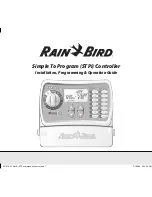
CY8C20xx7/S CapSense
®
Design Guide
Doc. No. 001-78329 Rev. *E
33
4. CapSense Performance Tuning with
User Modules
Optimal user module parameter settings depend on board layout, button dimensions, overlay material, and
application requirements. These factors are discussed in
. Tuning is the process of identifying
the optimal parameter settings for robust and reliable sensor operation.
4.1 General Considerations
4.1.1 Signal, Noise, and SNR
A well-tuned CapSense system reliably discriminates between ON and OFF sensor states. To achieve this level of
performance, the CapSense signal must be significantly larger than the CapSense noise. The CapSense signal is
compared to the CapSense noise by using a quantity called signal-to-noise ratio (SNR). Before discussing the
meaning of SNR for CapSense, it is first necessary to define signal and noise in the context of touch sensing.
4.1.1.1 CapSense Signal
The CapSense signal is the change in the sensor raw count when a finger is placed on the sensor, as demonstrated
in
. The output of the sensor is a digital counter with a value that tracks the sensor capacitance. In this
example, the average level without a finger on the sensor is 5925 counts. When a finger is placed on the sensor, the
average output increases to 6060 counts. Because the CapSense signal tracks the change in counts due to the
finger, Signal = 6060
– 5925 = 135 counts.
Figure 4-1. CapSense Signal and Noise
















































